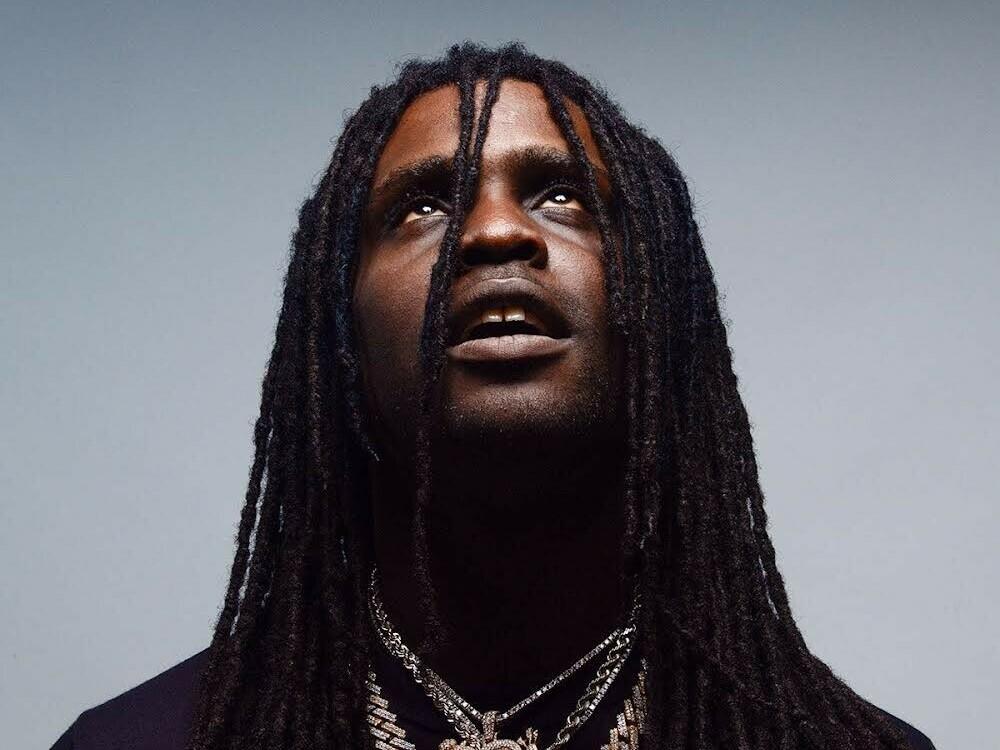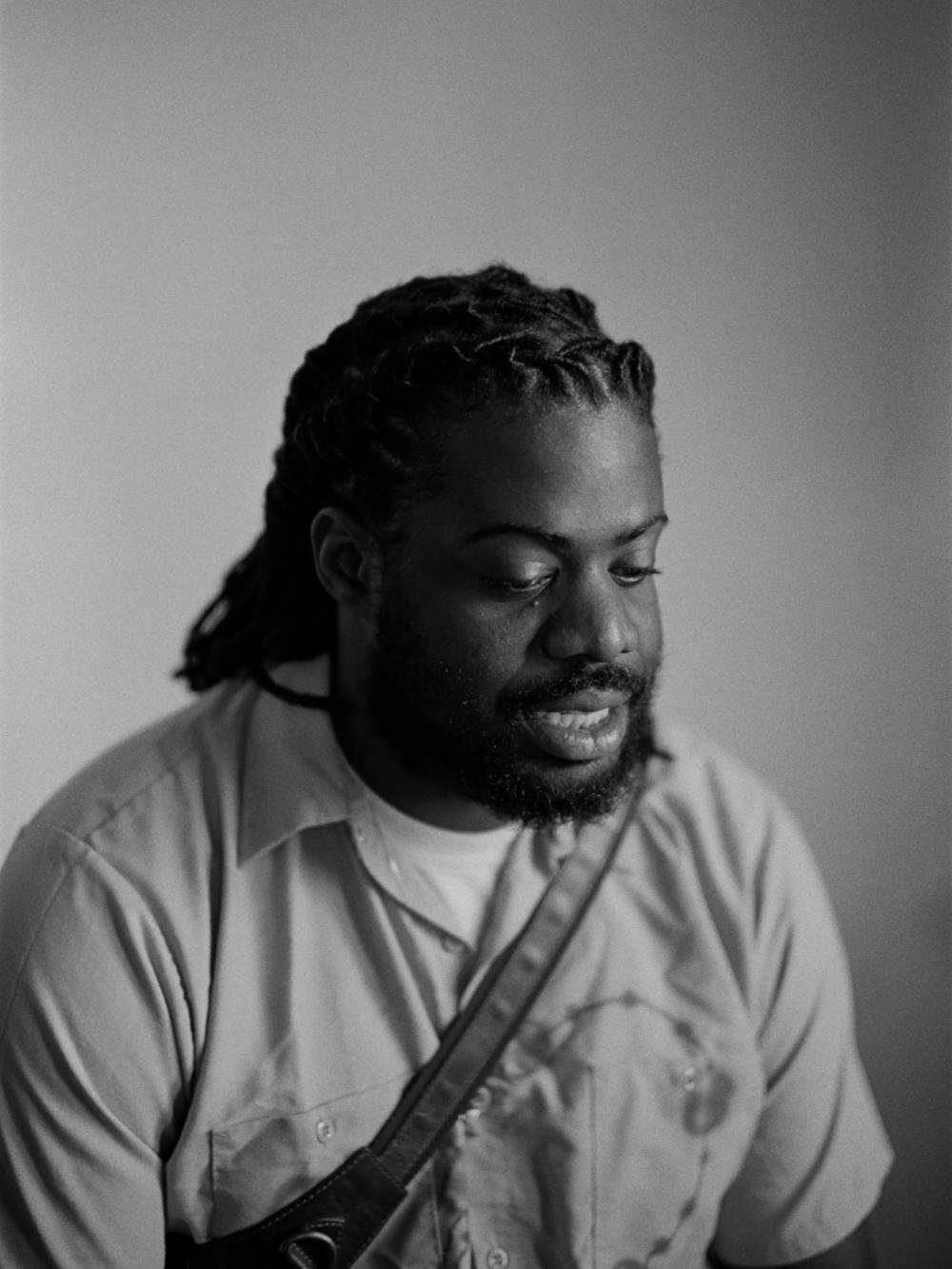Section Branding
Header Content
How Chief Keef and MIKE, former rap prodigies, escaped the attention economy
Primary Content
There's a moment on the forgotten 1994 Fugees debut, Blunted on Reality, where you can hear everything lock into place for a 18-year-old Lauryn Hill on a song called "Some Seek Stardom." Listening now, it's easy to recognize the lyrical and ideological nucleus of her music forming — its spirituality and literacy, a focus on enlightened skill and a future as one of rap's peerless performers. Blunted on Reality flopped, but its all-in follow-up, 1996's The Score, broke rap open with Hill at its heart in a new capacity and set the stage for one of the more curious careers of the last few decades. I think often of Blunted on Reality, marked as a colossal failure even now, and what might have happened if Ruffhouse Records had pulled the plug instead of advancing the group $135,000 to take another crack at seeing their vision through. Perhaps they would have found another way, but such a scenario could have meant leaving all of Hill's latent possibility, and the nurture inherent to realizing it, frozen in an album few would ever hear.
Every rap generation produces a teen prodigy in line with its values. LL Cool J was 17 when he realized he couldn't live without his radio. MC Lyte had just received her learner's permit when she released one of the first songs of the crack era, "I Cram to Understand U." Nas was the 17-year-old verbal assassin live at the barbecue. Andre and Big Boi signed to LaFace before their high school graduation and helped shift hip-hop's center southward from their friend's mom's basement. Wayne appeared on "Bling Bling" at 16, as the iced-out swagger of rap was reaching the zeitgeist. Chance made 10 Day at 18, ingratiating himself with a burgeoning online mixtape community in the twilight era of blogs. These are all stories of potential aligning with attention. In building upon expectations of themselves and of their class, each young artist seemed to realize the needs of the moment and, in doing so, push the culture forward.
But for every prodigy to successfully chart the path to a sustainable career, there is a gaggle of prospects lost to industry whims. Some burn bright and hot only to fizzle after one release, overwhelmed by the promise of their potential. Some allow initial perception to dictate how they move and become prisoners to the very idea of their music. Some find the attention of the spotlight searing and retreat into the shadows. Some just don't have the juice. The music industry shifting online has only exacerbated this kind of experience, opening the door wider for young hopefuls but making it far easier to get lost in the deluge of voices, or to lose one's own voice in straining to be heard above the noise. Denzel Curry and Doja Cat feel like testimonials for teen prospects staying the course and developing into the artists they were meant to be. Bishop Nehru and Tink feel like cautionary tales. Kodak Black is ... something in between. But all seem to be defined, in one capacity or another, by their relationship to the audience.
Two new albums from former teen prodigies, the Chicago drill shapeshifter Chief Keef's Dirty Nachos with production from Mike WiLL Made-It, and the Slums collective co-founder MIKE's Pinball with Tony Seltzer, feel like evidence of a certain kind of viability that is possible only when operating outside the demands of the attention economy. Both rappers have carved out space for themselves along the industry's margins, and each demonstrates how doing so can allow an artist to not only redefine themselves, but sustain a meaningful career.
A few months before "Gangnam Style" broke YouTube open for good, Chief Keef's breakout hit, "I Don't Like," found its own virality on the platform. Kanye came calling; Interscope, too — all off the strength of a mixtape being passed around Chicago high schools. Keef's debut album, Finally Rich, which remains his best seller, is one of the great drill albums, but in the shadow of a crumbling early '10s music infrastructure, it underperformed. When Interscope backed out of his deal, Keef spent the next decade exploring his obscure impulses. The druggy, bleating Almighty So became a foundational document for rappers like Playboi Carti and Lil Uzi Vert. Back from the Dead 2 became Keef's beatmaking playground for blaring synths and haunted chants. Nobody leaned further into abstraction. Thot Breaker flipped back to melodic R&B. Keef became as prolific as he was curious, never overly aware of the stakes.
MIKE was born from a different sphere, the simplicity of his chosen name underlining a sincere and forthright approach. At 17, he emerged as an ace of lo-fi, turnstile-jumping New York rap, the chosen disciple of another great teen prodigy, Earl Sweatshirt. His 2017 debut, May God Bless Your Hustle, laid out his plans early on: "How I'm supposed to trust the path that's been doubling the stress?" he rapped of going to college. His anti-stress stance would also manifest in the way he flowed, a strained but assertive yowl that deepened into a resonant, groggy grumble over time. MIKE's subsequent releases have found him on an alternative path — still a thinker and a student, but one learning at his own pace, each album an opportunity for mantra, self-reflection and relief. It can feel like his music is simply the solemn space he's found to think out loud: If you're listening in, so be it, but don't expect to decipher every bit of arcane philosophy.
There are those who have deemed MIKE "lyrical" and Keef a "mumble rapper" — the former a mark of sophistication and intellect that purists exalt like a martyr's stigmata, the latter a pejorative insinuating an obtuse, braindead way of being (one that Keef, for his part, has embraced proudly). Neither is a real thing, and neither has held totally true of the artists in question. You could credibly call MIKE a mumble rapper on songs like "Zap!" and "Iz U Stupid"; Keef has his fair share of explosive, technical performances, including verses on IDK's "17 wit a 38" or Tobi Lou's "Forecast." In truth, both have always been impressionistic in their own ways, prioritizing mood over meaning, or rather, making meaning out of tone.
Still, there is always intention behind their writing, and on these recent albums, both are playing against type — Keef much more lucid, and MIKE decidedly looser, than their boosters hailed them as at the start of their careers. There has always been an unsteadiness in MIKE's music, and beneath that murmured viscosity lie koan-like kernels of truth (a personal favorite of mine, which feels pertinent here, from the tears of joy song "Whole Wide World": "I seen n****s losing sense, tryna gain listens / Nothing changes when you working with the same vision"). But the flexible, immersive Pinball fully embraces the thrill of burying the pearls in the sand and letting the waves unearth them, pushing away from classicist ideas of high lyricism and playing directly into trap aesthetics. The slurred flows of "Skurrr" and "2k24 Tour" are as much about the sloshing motion of the cadences as they are the sprinkled bits of lore you must concentrate to hear; on the former, he raps, "You know this game will get malicious, and I got stories," and on the latter, "I'm the product of greed and destruction," each line benefiting from what remains unsaid. Pinball has all of the wisdom of a MIKE record, but trades in pathos for gratification, reaping the spoils of his effort. He has been pegged as a sensitive wordsmith seeking catharsis in music that warms like a weighted blanket — and he can be that, but it is refreshing to hear an artist choose to disrupt the calcifying perception of their work.
Keef makes a habit of following his whims to the fringes of the rap ecosystem, so it tracks that Dirty Nachos is an ode to blog-era mixtape culture, with Trap-A-Holics drops and song promos and sonic nods to pivotal trap fixtures. It feels natural that he'd shirk the streaming economy by embracing a model it killed off, and that, as many of his peers are delving deeper into distortion, he would follow up the shout-raps of 2021's 4NEM with some of the most matter-of-fact rapping of his career. Unlike MIKE, Keef is no stranger to these sounds, but in turning back the clock, he demonstrates just how aware he is of history, just how much ground he has covered, and just what his maturing voice is capable of. In his many turns, Keef seems to run through the modes inherent to the form: goofy, sneering, zonked-out, excitable and cavalier, sometimes all at once. Dirty Nachos is full of preening verses — where his son thinks he's a genie, where he ducks the Illuminati, where he plays headhunter on the trail of George Zimmerman — all paraded through unbelievable Mike WiLL Made-It beats that feel like careful reconstructions from DatPiff classics. (Mike WiLL, in his role, invokes Shawty Redd, Nard & B, Southside, Lex Luger and a few of his own prototypes.) The clarity is as much the point as the flexing: Keef sounds like someone secure in his position, aware of the past and free from it, whose station is assured no matter who is listening.
In each artist's case, the refusal to demand your attention becomes part of the appeal. You could drop in on Chief Keef at nearly any point in his career and discover something interesting, some provocation, as if he's tagged the abandoned mall and is welcoming all passersby to admire his work. MIKE has amassed a trove of records that feel hidden in plain sight, a collection akin to the works of independent directors like Gregg Araki. Both rappers have catalogs that seem to defy the logic of the current market. But bearing witness to what they've become, I think of Keef and MIKE not as exceptions to the rule, but as proof of what is possible when talent is allowed to develop on its own terms. So much of the music apparatus now is dependent on grabbing and holding as much focus as possible, and there is plenty of good work being done under those conditions. Still, there should still be space for artists with little regard for self-promotion.
What's encouraging about these rappers is that both seem to be doing fine operating in this way. Despite all of the inherent risk to their approaches, freelancing amid the never-ending churn of playlists with cycles that end quicker than they began and careers that evaporate into the feed with a single scroll, they have grown cult followings willing to shadow them on their adventures, making it easier to withstand the fickle nature of trends and discourse. For the artists, the payoff of these albums is the freedom to reimagine who they are without consequence — to have the reality of their art align with their vision, without losing their base. And for us, the payoff is getting to see that teenage potential realized, and our faith in that potential rewarded.


